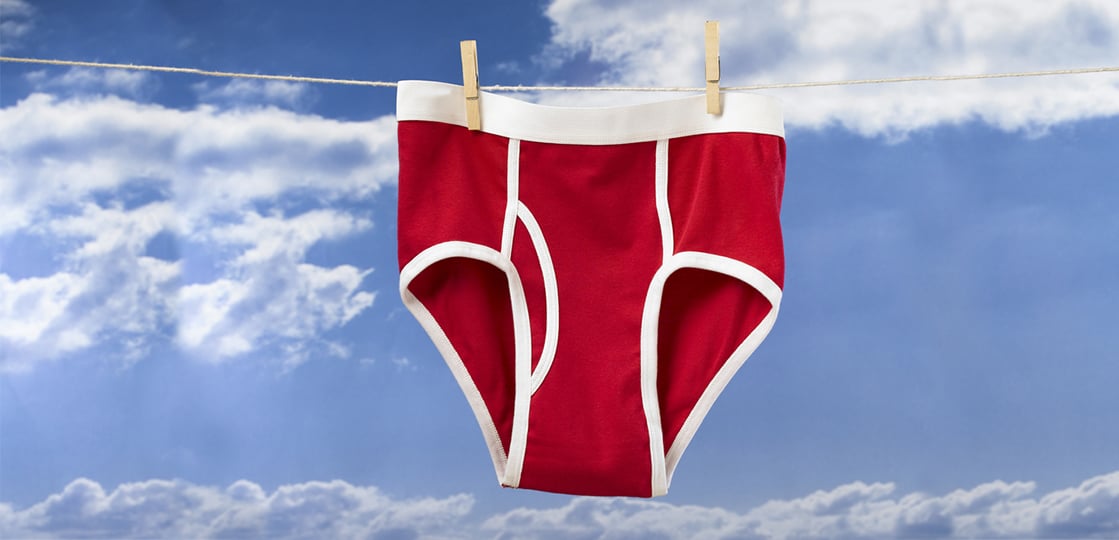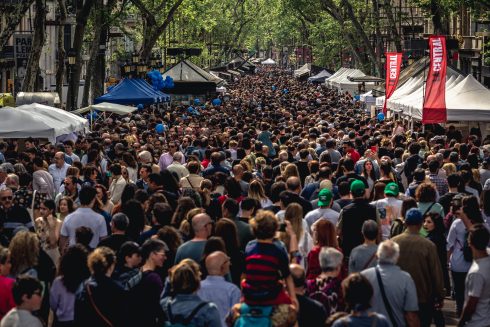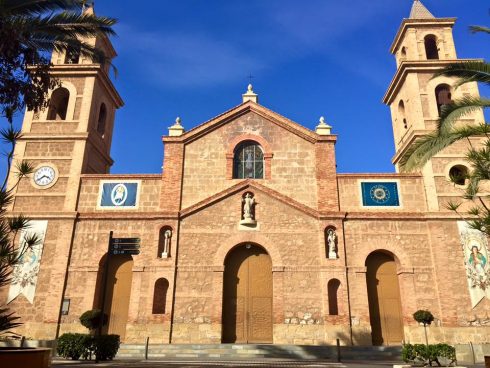If you’re looking to spice up your leap into the new year, why not do what the Danish do at New year’s Eve and pick a chair to jump off when the clock strikes midnight, or throw ceramic dishes against your neighbours’ front door.
Okay, maybe you don’t want to ignite a domestic situation with your neighbour in the the new year…
You can read about it instead.
Here are five wacky new years traditions that you may not have known existed across Europe.

Italy and its red underwear
The main tradition of eating lentils is mixed in with a bunch of other superstitions in Italy on New Year’s Eve, one of them is quite cheeky.
Don’t expect to see lentils on the supermarket shelves in the days leading up to December 31.
Italians even start buying them weeks in advance.
Lentils symbolise money and good fortune for the coming year, so it is tradition to sit around a table and enjoy the year’s final dinner with these legumes.
The dinner in many parts of Italy also includes a cotechino, a large spiced sausage, or a zampone; stuffed pig’s trotter.
Another bizarre superstition, and one that could be quite dangerous if you’re out wandering the streets beneath an open window.
Italians like to throw pots, pans and clothes out of the window on New Year’s Eve to let go of the past and move towards the future.
A slightly less dangerous superstition, but a little cheeky, is that some Italians like to wear red underwear on December 31.
The tradition is dated back to medieval times and used by the men who would use a red drape over their groin to protect their precious ‘family jewels’ from the witches who at the turn of midnight were out on the village streets looking to cast spells and make trouble.
To give the gift of red underwear is to wish great fortune on the receiver and a rich and satisfying year ahead.
But don’t worry, the red slips don’t need to be Armani or Versace, any underwear, even if it’s from the local supermarket will do, so long as it’s red.
The colour red is a lucky colour and is supposed to bring allegria; good fortune.
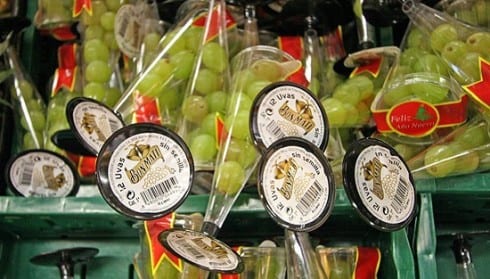
SPAIN
Spaniards end and start the year in dramatic fashion with its tradition of the eating of twelve grapes: las doce uvas de la suerte.
First, they gather to celebrate ‘the old night’ (La Noche vieja) in the main square of the city.
Crowds huddle together to stare at the clock on the tower or the church and when the clock bells first strike they shout “¡Feliz Año Nuevo!”.
Then they just start furiously shoving 12 grapes into their mouths, 12 to represent each month of the year.
The tradition of eating twelve grapes originated in 1909, when Vinalopó grape producers promoted consumption of the fruit due to an overproduction that occurred that year.
If you manage to eat all twelve in time with the chiming of the midnight bells then you will have a successful and prosperous year.
If not, then expect some bad luck on that corresponding month of the year.
GERMANY
There are two weird new year’s traditions in Germany.
The first is lead pouring, where each person melts a small piece of lead or tin over a candle and pours it into a container of cold water.
The shape it forms into is meant to reveal that person’s fate for the year ahead.
Another thing that can’t be missing from any self-respecting New Year’s Eve party is a krapfen, a German doughnut, that’s usually jam or chocolate filled, but sometimes filled with mustard as a prank.
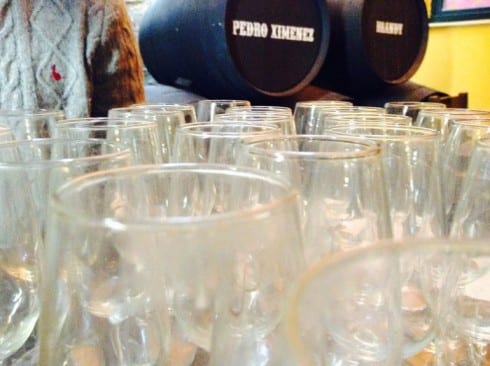
DENMARK
Forget about fireworks creating a bang in Denmark, it’s the lesser known Danish New Year’s Eve tradition that creates quite a bang.
It’s traditional to throw plates and dishes against your friend’s and neighbour’s front doors in Denmark.
The bigger the pile the next morning, the more luck you’ll have during the year.
People in Denmark also often jump off chairs at midnight to symbolise a leap into the New Year.
PORTUGAL
Wild celebrations break out during Noite Mágica, literally ‘magic night’ in Portugal.
As the clock strikes 12 midnight, party-goers munch on a dozen grapes to guarantee a happy coming year.
Between Christmas and New Year’s Eve, the Portuguese enjoy the tradition of eating a special cake called Bolo-Rei, the ‘king cake’.
It is a round cake with a large hole in the centre, resembling a crown covered with crystallised and dried fruit.
In northern Portugal, children go from house to house singing traditional janeiros, or January songs for good luck.
READ MORE:
- Costa Blanca city in Spain announces first-ever official outdoor New Year’s Eve party
- Berchules: Why this village in southern Spain has refused to celebrate New Year’s Eve in 25 years
- How government scrooges in 1882 accidentally created Spain’s obsession with gobbling 12 grapes on New Year’s Eve

